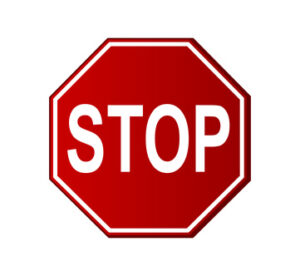 I was rushed and thrown off just a bit from my normal travel routine — flying to a keynote event in French Lick, Indiana. For one, I normally leave my packed bags in the hallway, just outside of my bedroom. But the night before, I decided to carry my travel bag to the basement, nearer to my vehicle. I left my house that morning around 7:15 and halfway to the Pittsburgh Airport, I felt that horrible sinking feeling in my stomach. You got it — I left my travel bag at home and had to make a quick management decision. Do I continue to the airport and buy clothes and necessities after I land, or do I go back home for my bag and drive to Indiana?
I was rushed and thrown off just a bit from my normal travel routine — flying to a keynote event in French Lick, Indiana. For one, I normally leave my packed bags in the hallway, just outside of my bedroom. But the night before, I decided to carry my travel bag to the basement, nearer to my vehicle. I left my house that morning around 7:15 and halfway to the Pittsburgh Airport, I felt that horrible sinking feeling in my stomach. You got it — I left my travel bag at home and had to make a quick management decision. Do I continue to the airport and buy clothes and necessities after I land, or do I go back home for my bag and drive to Indiana?
The decisions we make before, during, and after work are filled with starts, stops, distractions, and potentially harmful errors. Individual oversights and errors can and will eventually lead to unwanted consequences. However, we need multiple checks and balances that limit fallout and the continuance of loss, or possibly, an egregious event. But what can we learn from sound safety management practices and human performance strategies and tactics? Here’s five simple and straightforward ways we can improve safety performance and minimize errors and their effect.
Build It In All The Way Through
Specification and design reviews help to build safety in from the start. Our specification and design reviews of materials, tools, equipment, and facilities require multiple checkpoints and verifications to ensure diverse views and assessments with varying degrees of approval prior to testing and final acceptance by our end-users. Oversights and errors also happen within these work processes. We don’t normally think about human performance errors on the management or engineering side, but they can certainly lead to serious incidents down the road.
Time-outs during our operations don’t always occur when and where we think they should occur. Sometimes conversations before and after our travel to work, at lunchtime, or at other normal breakpoints afford opportunities to discuss hazards and risks that may be changing because of work group interfaces with equipment and each other. All of this leads to a broader potential path that’s cleared for further discussions as well as efficient and effective time-outs while work is being performed.
Walk-throughs and talk-throughs should be part of pre and post-task discussions and briefings that allow you to play your work forward, as a group, to discuss “what if” scenarios based on various work events and possible outcomes that may produce harm. These discussions help to create salience or top of mind awareness (TOMA) in workers and their decision-making. In turn, workers will draw upon their most relevant discussions and create their own form of mental rehearsals that help them to make safer choices.
Peer checks and checklists should engage everyone, whether someone is working alone, or with any number of other individuals. Individual checks should rely on some type of list or process that identifies and helps to control for various hazards and risks. Peer checks with other experienced workers also help to limit errors by relying on each other to verify and validate work efforts before work begins, and throughout the job.
Open your communications channels to ensure that consensus building within important decisions occurs. If you have several workers engaged in a task, make sure everyone is heard and is given the opportunity to speak up. Make for certain that concerns are brought forward before work moves forward. Three-way communications are often necessary to verify or correct and redirect the steps of an important process and to keep everyone safe. Communications need to be clear, confirmed or corrected, and repeated when necessary.
Guess what? I did go back home for my bag and enjoyed a beautiful 450-mile drive to Indiana. I also had a rocking great keynote with my audience! I decided to drive because, at times, I tire of flying and the weather was great. However, part of my next trip will include checklists. A checklist to use while I’m packing and one downstairs to help ensure that I limit errors and oversights, before my travel starts. Moreover, once my travel begins, an important part of my mental outlook is to remain flexible, and not wrestle unceasingly with mistakes that over-occupy my thoughts. This will allow me to think clearly when I must move ahead with a given decision. Determine to stay calm, with positive self-talk, and keep it 65 and breezy, all day long!
Mistakes aren’t always related to safety rules or violations, and errors and oversights will occur. However, we must help ensure that their effects are minimized. Finally, it’s obviously important to hold people accountable, to be deliberate, intentional, and thorough in each of these types of efforts.
David Sarkus, MS, CSP is Chief Servant Leader and Founder of David Sarkus International Inc., a leading health and safety management consulting and training firm based in Pittsburgh, Pennsylvania. David is a motivational safety speaker who delivers keynotes, training programs, and consulting in a variety of verticals. His experience, education, and leadership qualities have allowed him and his firm to successfully apply strategies and tactics within various mainstream work-processes for over 30 years.
